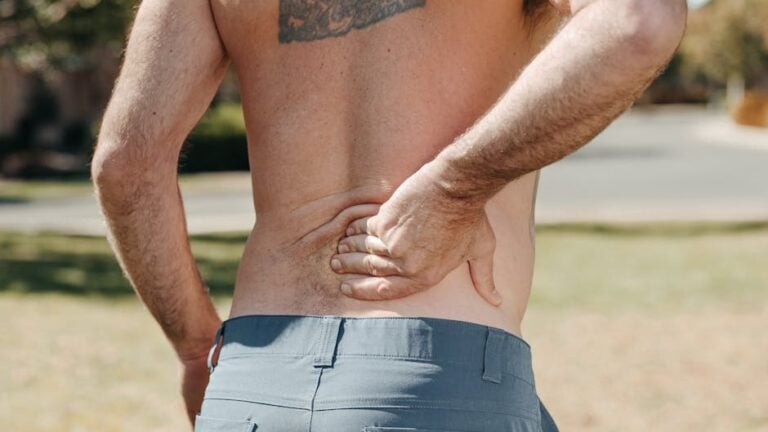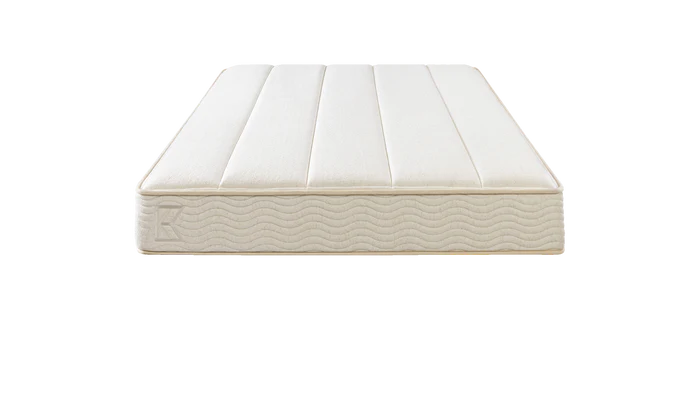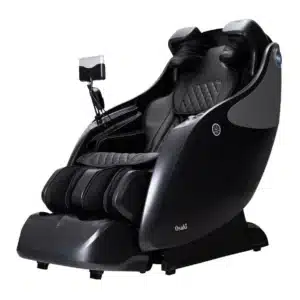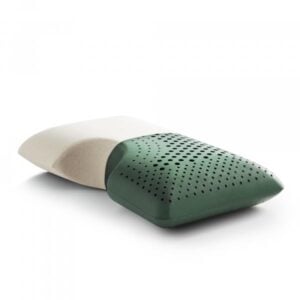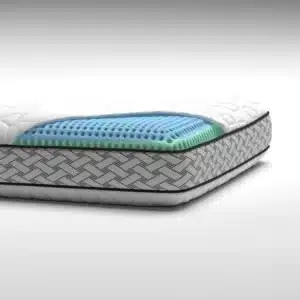Sleep Easy: The Best Mattresses for Lower Back Pain
Searching for the best mattress for lower back pain often means you’re wrestling with poor sleep quality. That discomfort affects every aspect of daily life, but choosing the right mattress can be a game-changer. Not all mattresses are created equal, and the ideal one for you could significantly enhance your sleep experience.
For those who want a quick overview, here are the top picks:
– Medium-Firm Mattresses: Perfect for comfort and spine alignment.
– Memory Foam Mattresses: Exceptional for body contouring and pressure relief.
– Hybrid Mattresses: Deliver balanced support through a combination of foam layers and metal coils.
– Adjustable Air Mattresses: Customizable firmness to suit your nightly needs.
– Latex Mattresses: Durable and hypoallergenic, made from natural materials.
Selecting the right mattress is more than just a comfort choice; it’s essential for improving sleep quality and alleviating lower back pain. Given that many individuals spend about a third of their lives in bed, this decision can have profound effects on overall well-being.
I’m Ben Trapskin, the creator of Yawnder. After grappling with my own sleep problems, I turned to proper medical advice and diligent mattress research. My mission is to assist others in discovering the best mattress for lower back pain. Stick with me as we navigate through options designed to ease your back pain and elevate your sleep quality.
Why Mattress Choice Matters for Lower Back Pain
The significance of mattress selection cannot be overstated, especially for managing lower back pain. Here’s why it matters:
Spine Alignment
A quality mattress is key to maintaining your spine’s natural alignment. If your mattress is excessively soft or overly firm, it can lead to unnatural twists and bends. This misalignment can either trigger or worsen lower back pain. Research published by Jacobson, Boolani, and Dunklee highlighted that medium-firm mattresses effectively alleviated clinical symptoms of pain better than their firmer counterparts.
Muscle Relaxation
A well-supported mattress promotes complete muscle relaxation while you sleep. Insufficient support can result in muscle tension, leading to soreness and stiffness upon waking. Studies have shown that individuals transitioning to newer mattresses often experience diminished back pain and reduced spinal stiffness—a testament to the importance of mattress quality.
Sleep Posture
Your chosen sleep posture influences back pain levels. Different mattresses cater to varied sleeping positions. For instance, side sleepers require support that cushions their shoulders and hips, ensuring proper spinal alignment. A mattress that fails to accommodate your preferred sleeping position can exacerbate back pain. Customized options can provide better alignment specifically for side sleepers.
Consider the findings from a study involving 59 healthy participants who reported discomfort despite lacking any diagnosed musculoskeletal issues. After switching to medium-firm mattresses, they experienced nearly a 48% reduction in back pain and a remarkable 55% improvement in sleep quality.
Top 5 Mattresses for Lower Back Pain
Now, let’s uncover the five types of mattresses that can help you sleep easy while managing lower back pain:
Medium-Firm Mattresses
##### Comfort, Support, and Spine Alignment
Medium-firm mattresses offer an ideal blend of comfort and support. Research in The Lancet has shown that these mattresses effectively mitigate lower back pain more than firmer options. They support the spine’s natural curve, helping maintain alignment during sleep. If you’re uncertain, consider a flippable mattress, like the Zenhaven, which offers dual firmness options.
Memory Foam Mattresses
##### Body Contouring and Pressure Relief
Designed to contour closely to your body, memory foam mattresses provide remarkable pressure relief. Originally developed for NASA, this material cushions pressure points and distributes weight evenly. However, tread carefully: overly soft foam may misalign your spine and intensify discomfort. A balanced choice is the Saatva Classic (Luxury Firm), which combines memory foam’s softness with the support of an innerspring system.
Hybrid Mattresses
##### Foam Layers, Metal Coils, and Balanced Support
Hybrid mattresses blend foam and metal coils, offering both pressure relief and robust support. This combination makes them a go-to option for individuals dealing with back pain. Ergonomically zoned coils can promote enhanced spinal alignment. The Leesa Sapira Hybrid, featuring an effective mix of foam and coil support, stands out among back pain sufferers.
Adjustable Air Mattresses
##### Customizable Firmness, Sleep Quality, and Pain Relief
Adjustable air mattresses let you tailor the firmness using a remote or smartphone app. This flexibility can be revolutionary for those suffering from back pain, as you can adjust based on how your body feels each night. The capability to modify firmness in real time brings a personalized touch to pain management.
Latex Mattresses
##### Natural Materials, Durability, and Hypoallergenic
Known for their exceptional durability, latex mattresses provide supportive contouring while being made of natural materials. They are often hypoallergenic too, making them suitable for allergy sufferers. Latex supports your body without excessive sinking, thereby maintaining proper spinal alignment. If you’re in the market for a blend of support and natural benefits, latex mattresses are an excellent choice.
How to Choose the Best Mattress for Lower Back Pain
Feeling overwhelmed by mattress options? Here’s a guide to help simplify your selection process based on personal preference and essential components:
Personal Preference
Recognizing that comfort is subjective is vital. The best mattress is one that feels comfortable and adequately supports you. Research emphasizes that any mattress promoting pain-free sleep is the right choice for that individual.
Mattress Components
Familiarize yourself with mattress components for an informed decision:
– Coils or Springs: Provide the foundational support, impacting firmness and overall comfort.
– Padding: Varies in thickness and materials, influencing comfort and pressure relief.
– Depth: Typically ranges from 7 to 18 inches. Choose a depth suited to your comfort preferences and body type.
Achieving Balance
While back support is essential, overall comfort shouldn’t be overlooked. A mattress that is too firm can cause pressure points, while one that is too soft may fail to offer adequate support, leading to spinal misalignment. Striking a balance is key.
Tip: If you lean towards a firmer mattress but desire added comfort, consider one with thicker padding.
Knowing When to Replace Your Mattress
An old, sagging mattress can exacerbate back pain. If your mattress has noticeable indentations or has lost its comfort, it’s crucial to invest in a new one. Temporary fixes, like placing boards under the mattress, are not sustainable solutions.
Tips for Testing and Buying a Mattress
To help you find the right mattress for lower back pain, here are practical tips:
Test-Drive the Mattress
Before purchasing, spend time lying on the mattress in various positions. Aim for at least 15 minutes, noting how your back feels and whether the mattress supports your spine adequately.
Tip: If in-store testing is not possible, rely on online reviews to gauge customer experiences.
Look for a Money-Back Guarantee
A solid return policy is crucial, especially for online purchases. Many companies offer trial periods of 90 to 365 days, allowing you to return the mattress if it doesn’t meet your expectations.
Visit a Mattress Showroom
If feasible, testing mattresses hands-on can be invaluable. Understanding the materials and firmness levels firsthand will significantly inform your decision.
Pro Tip: Many direct-to-consumer brands now have showrooms or collaborate with traditional stores, enabling you to test products before buying.
Use Technology to Your Advantage
Some brands utilize technology to match you with the ideal mattress. Pressure mapping can visually indicate how well a mattress supports various body parts, greatly beneficial for those experiencing lower back pain.
Check for Certifications and Safety Standards
Investigating mattress certifications—like CertiPUR-US or Oeko-Tex—ensures that the product is free from harmful chemicals and meets safety standards.
Frequently Asked Questions about Best Mattress for Lower Back Pain
Which mattress is best for lower back pain?
Research recommends a medium-firm mattress, known for maintaining spinal alignment while providing comfort.
Is it better to have a soft or firm mattress for back pain?
Neither extreme is ideal. A medium-firm mattress generally offers the best support and comfort balance, reducing pain.
Is my mattress causing my lower back pain?
Yes, poor support from an old mattress can lead to discomfort. Signs to watch for include stiffness in the morning and visible sagging.
Conclusion
Choosing the right mattress for lower back pain is vital for enhancing your sleep quality and overall health. At Yawnder, we understand how essential it is to find a mattress tailored to your specific needs.
Whether you gravitate towards a medium-firm, memory foam, hybrid, adjustable air, or latex mattress, the key lies in selecting one that supports your spine and alleviates pressure points.
Ready to improve your sleep experience? Explore our curated collection of natural mattresses today. A restorative night’s sleep is just a mattress away.
Investing in the right mattress paves the way toward a healthier life. Choose wisely, and enjoy a more comfortable, pain-free sleep.


